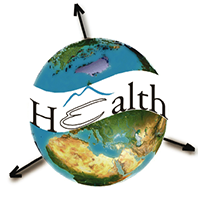Evaluation and planning of Chagas control activities using geospatial tools

Submitted: 15 May 2019
Accepted: 5 October 2019
Published: 6 November 2019
Accepted: 5 October 2019
Abstract Views: 1329
PDF: 637
HTML: 31
HTML: 31
Publisher's note
All claims expressed in this article are solely those of the authors and do not necessarily represent those of their affiliated organizations, or those of the publisher, the editors and the reviewers. Any product that may be evaluated in this article or claim that may be made by its manufacturer is not guaranteed or endorsed by the publisher.
All claims expressed in this article are solely those of the authors and do not necessarily represent those of their affiliated organizations, or those of the publisher, the editors and the reviewers. Any product that may be evaluated in this article or claim that may be made by its manufacturer is not guaranteed or endorsed by the publisher.

 https://doi.org/10.4081/gh.2019.786
https://doi.org/10.4081/gh.2019.786




